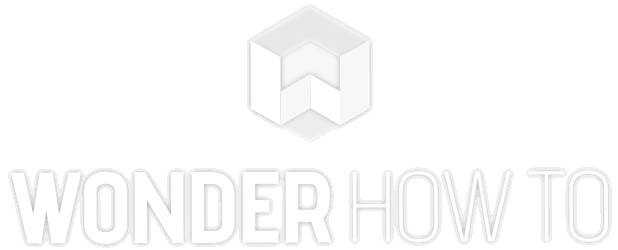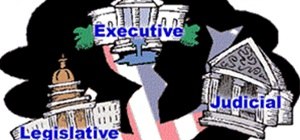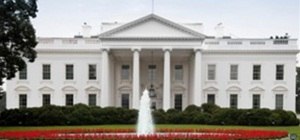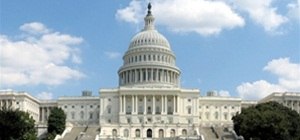The genius of the U.S Constitution is that it spreads the power of government both within the national government and between the federal government and state governments.
- Federalism
In our system of government, some powers of government belong only to the federal government, while others belong only to the state governments. still other powers are shared by both levels of government.
2. Separation of Powers
The powers of government are divided among the executive, legislative, and judicial branches.
3. Checks and Balances
Each of the three branches of government has ways to check, or limit, the powers of the other branches.
The Power is Divided into Three Branches
-Executive branch enforces laws (President and departments).
The Legislative and Judicial branches keep the Executive branches "on check".
They can do certain things in order to keep each branch from obtaining too much power.
The Legislative branch can:
- impeach and remove the president
- can override "veto"
- Controls spending of money
- Senate can refuse to confirm presidential appointments and ratify treaties
The Judicial branch can:
- Can declare executive acts unconstitutional
- Judges, appointed for life, are free from executive control
Just updated your iPhone? You'll find new emoji, enhanced security, podcast transcripts, Apple Cash virtual numbers, and other useful features. There are even new additions hidden within Safari. Find out what's new and changed on your iPhone with the iOS 17.4 update.








4 Comments
I can always look at this site if I forget the powers of the branches. In order to prevent a dictator from raising power have to be divided.
Thank you so much. You made it a lot easier for me to understand the jobs of the Executive, Legislative, and Judicial Branches.
Yes madam you could always come to We the People for your government oriented needs. This world was created to inform people how our government works and how we could become involved with our government. One person can make a difference.
It is good to know and have the separation of powers clarified in a simple easy to understand manner, knowing what special power belongs to each branch. Thanks!
Share Your Thoughts